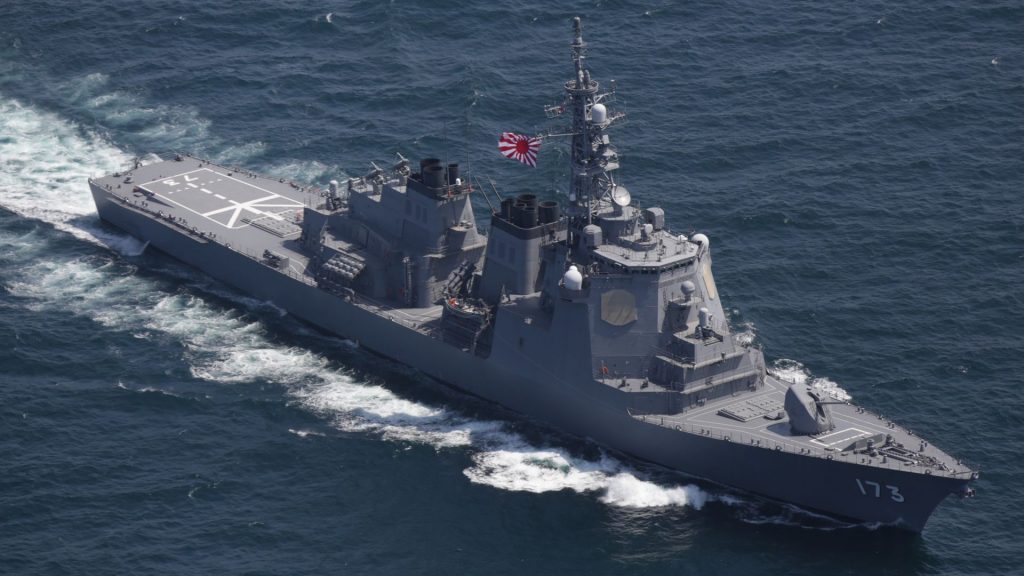Japan building railgun-armed destroyers with help from the US

Japan is taking a significant leap in naval warfare technology, teaming up with the United States to build a new class of Aegis-enabled destroyers. The ships are expected to be armed with advanced weapons such as railguns and high-powered lasers — tools designed to counter some of the toughest threats at sea, including hypersonic missiles.
Replacing the Kongo-class vessels
Japan’s Acquisition, Technology & Logistics Agency (ATLA) is working with the U.S. Missile Defense Agency to design destroyers that will eventually replace the Japan Maritime Self-Defense Force’s (JMSDF) four Kongo-class ships.
The Kongo-class, built between 1988 and 1998, remains a cornerstone of Japan’s fleet of 36 destroyers. Each ship displaces 7,250 tons, carries a crew of about 300, and can reach speeds up to 30 knots thanks to its four gas-turbine engines producing 100,000 horsepower. Armaments include 90 vertical launch cells packed with air defense and ballistic missile interceptors, as well as Harpoon anti-ship missiles, torpedoes and anti-submarine rockets.
But the ships are aging, and Tokyo is moving toward replacements that can integrate next-generation armaments, like directed-energy weapons and railguns.
The Aegis backbone
According to Militarnyi, the U.S. will customize the Aegis Combat System for Japan’s new destroyers. Aegis acts as the backbone of U.S. naval missile defense, linking ships and launchers into a single network capable of tracking and engaging multiple threats simultaneously. Any vessel equipped with Aegis becomes a node in that wider defensive web.
Integration with Aegis is especially important as Japan and the U.S. continue joint work on missile defense technologies. The two countries signed a cooperative agreement in 2024 to codevelop the Glide Phase Interceptor, designed to defeat hypersonic missiles during their most dangerous phase of flight.
Railgun breakthrough
Japan already made headlines for successfully firing a railgun from a naval vessel — a first in maritime weapons development. ATLA released footage in October 2023 showing the test, describing it as a milestone in the pursuit of early deployment.
Railguns use electromagnetic force to hurl projectiles at extraordinary speeds without the need for explosives. The result is a solid slug traveling further and faster than conventional munitions, with the potential to intercept high-speed threats such as China’s much-publicized hypersonic “carrier killer” missiles.
The U.S. Navy spent years, and more than $500 million, on its own railgun program before shelving it in 2021, making Japan’s progress a notable breakthrough. According to Naval News, Japan’s prototype weighs 8 tons, has an almost 20-foot barrel, and already achieved Mach 6.5 in trials.
Japan’s future fleet
Reports suggest that the JMSDF’s 13DDX future destroyer program could be the platform where railguns, lasers and other directed-energy weapons become standard. These capabilities, paired with multifunction radar and Aegis integration, would give Japan’s navy unprecedented defensive options against fast-moving aerial and missile threats.
The Japanese Ministry of Defense has committed billions of yen in recent budgets to railgun research and development. Officials say these new weapons will be critical to protecting Japanese forces against advanced regional threats.
A deeper US-Japan defense partnership
The destroyer program reflects a broader strengthening of U.S.-Japan defense ties. Much like the AUKUS submarine partnership with Australia, some experts see potential for Washington and Tokyo to expand cooperation on warship construction.
If Japan can successfully integrate Aegis with railguns and lasers, it’s likely the technology could eventually find its way onto U.S. destroyers as well.
For now, Japan’s future fleet represents one of the most ambitious efforts in modern naval warfare — an attempt to leapfrog current missile defense systems and prepare for an era defined by hypersonics and directed energy.





